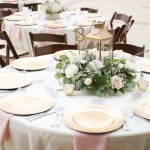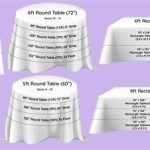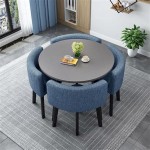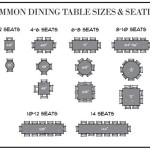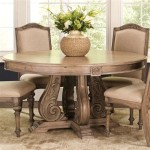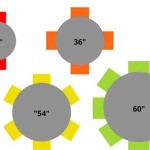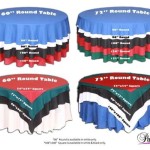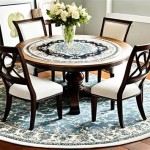How To Make A Dining Table In Minecraft Education Edition
Minecraft Education Edition provides a creative and engaging platform for learning and building. One common project that can be undertaken is the construction of a dining table. This task integrates practical skills with creative design, allowing students to explore resource management, spatial reasoning, and collaboration, if working in multiplayer mode. The following guide provides a detailed explanation of how to build a functional and aesthetically pleasing dining table within the Minecraft Education Edition environment.
Gathering Resources
The first step in building a dining table, as with any Minecraft project, is gathering the necessary resources. The primary resources required are wood logs, which will be used to create planks for the tabletop and legs, and potentially other decorative elements. The type of wood used is a matter of aesthetic preference and availability within the virtual environment. Oak, spruce, birch, and acacia wood are all viable options. The amount of wood needed will depend on the desired size of the table.
To acquire wood logs, the player needs to locate trees and use an axe to chop them down. An axe can be crafted using sticks and wooden planks, cobblestone, iron ingots, gold ingots, or diamonds. A wooden axe is the most basic, while diamond axes are the most durable and efficient for chopping wood. Once a tree is located, the player should equip the axe and repeatedly click on the tree's trunk until the wood log is obtained. Repeat this process until a sufficient number of wood logs are collected. A minimum of four logs is generally recommended for a small table, but larger tables will naturally require more.
After obtaining the wood logs, the next step is to convert them into wooden planks. Place the wood logs into the crafting table's interface. Each log will yield four wooden planks of the same type. These planks serve as the fundamental building blocks for constructing the tabletop. The crafting table is essential for this process. If one is not readily available, it can be crafted from four wooden planks of any type. Place one plank in each quadrant of the crafting grid to create a crafting table.
Additional resources that may enhance the dining table's appearance include items like carpets, pressure plates, or even note blocks for decorative purposes. These are optional and depend solely on the desired aesthetic of the table. Carpets can add color and texture, while pressure plates can serve as makeshift placemats allowing for customization. Note blocks can contribute a touch of unique functionality, if that is desirable.
Crafting the Table Top and Legs
With enough wooden planks acquired, the next step is to craft the tabletop. The simplest method is to arrange the planks in a square or rectangular shape. The size of the tabletop is determined by the desired capacity of the dining table. For a smaller table, four planks arranged in a two-by-two square may suffice. For a larger table, a three-by-three or even larger arrangement may be necessary. The planks can be placed directly on the ground or, preferably, on top of supporting legs.
The table legs can be created in several ways. The most common method involves using fences or wooden slabs. Fences provide a realistic leg appearance and can be crafted from sticks and wooden planks. Place two sticks in the middle row of the crafting table and one plank above and one below each stick. This creates fence blocks. Alternatively, slabs, created by placing three planks in a row horizontally in the crafting table, can be stacked to create a shorter, more square table leg. The choice between fences and slabs depends on the desired height and style of the table.
To attach the legs to the tabletop, place the fence or slab blocks underneath each corner of the plank arrangement. Ensure the legs are placed symmetrically for stability and visual appeal. Experimentation with different leg placements and heights can lead to unique design variations. For example, placing legs slightly inward from the corners can create a more modern look.
Another approach for creating table legs is using upside-down stairs. Placing upside-down stairs at each corner can provide a more decorative and refined appearance. These stairs can be crafted from wooden planks by arranging six planks in a specific pattern within the crafting table. The pattern involves placing three planks in the bottom row, two planks in the second row, and one plank in the top row, forming a stair-like shape. The orientation of the stairs can be adjusted by right-clicking after placement.
Decoration and Customization
After constructing the basic table structure, the next stage involves decorating and customizing the table to enhance its aesthetic appeal. This is where creativity can truly shine. Various items within Minecraft Education Edition can be utilized to create a visually engaging dining table setup.
Carpets can be used as tablecloths or placemats. Their vibrant colors and soft texture add visual interest to the table. To place a carpet, simply right-click on the tabletop. Experiment with different carpet colors and arrangements to create stripes, patterns, or individual placements for each seating position.
Pressure plates can also serve as makeshift placemats. They are available in various materials such as stone, wood, and iron. Their flat surface provides a clean and modern aesthetic. Placing pressure plates at each seating position helps to define individual spaces and create a more organized look.
Flowers and flower pots are excellent additions to the table's centerpiece. Minecraft Education Edition offers a wide variety of flowers, each with its unique color and shape. Placing one or more flower pots in the center of the table and planting flowers within them can create a visually appealing and natural centerpiece. The choice of flowers depends entirely on personal preference and the desired color scheme.
Candles can be added for a touch of ambiance. They provide a soft, warm light that enhances the dining experience. Candles can be placed directly on the table or on candle holders. The addition of candles is especially effective in dimly lit environments. Minecraft Education Edition also allows the coloring of candles for further customization.
Finally, consider adding chairs around the table to complete the dining setup. Chairs can be crafted using stairs, slabs, and signs. Place stairs facing the table, and then attach signs to the sides of the stairs to act as armrests. This creates a simple yet functional chair. Experiment with different stair types and sign designs to create a unique seating arrangement that complements the table's style.
Through meticulous resource gathering, careful crafting, and creative decoration, a functional and aesthetically pleasing dining table can be readily constructed within Minecraft Education Edition. This project reinforces key skills in resource management, spatial reasoning, and creative design, providing a valuable learning experience within the engaging virtual environment.

How To Make Working Table Chairs In Minecraft Master Mine Tutorials

Minecraft How To Make Dining Room Furniture Modern House Build Ep 19

Minecraft 10 Dining Table Build S Ideas

Minecraft Xbox 360 Furniture Tutorial And Ideas Dining Room

How To Build A Table And Chairs Minecraft Indoors Kitchen Tutorial

Minecraft How To Make Dining Room Furniture Modern House Build Ep 19

How To Make Furniture In Minecraft Wonderhowto

Tutorials Furniture Minecraft Wiki

Tutorials Furniture Minecraft Wiki

How To Make Furniture In Minecraft Wonderhowto
Related Posts

